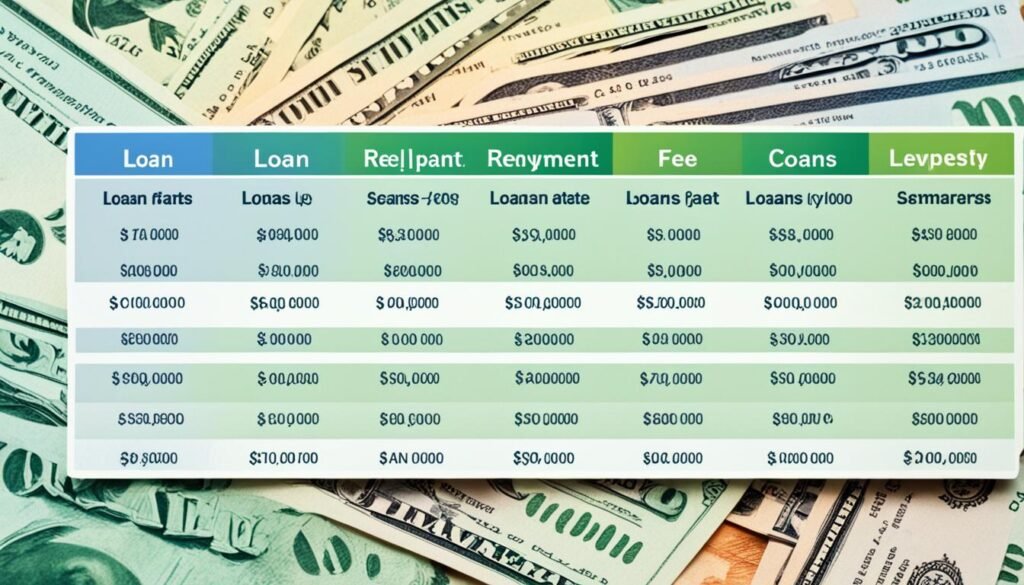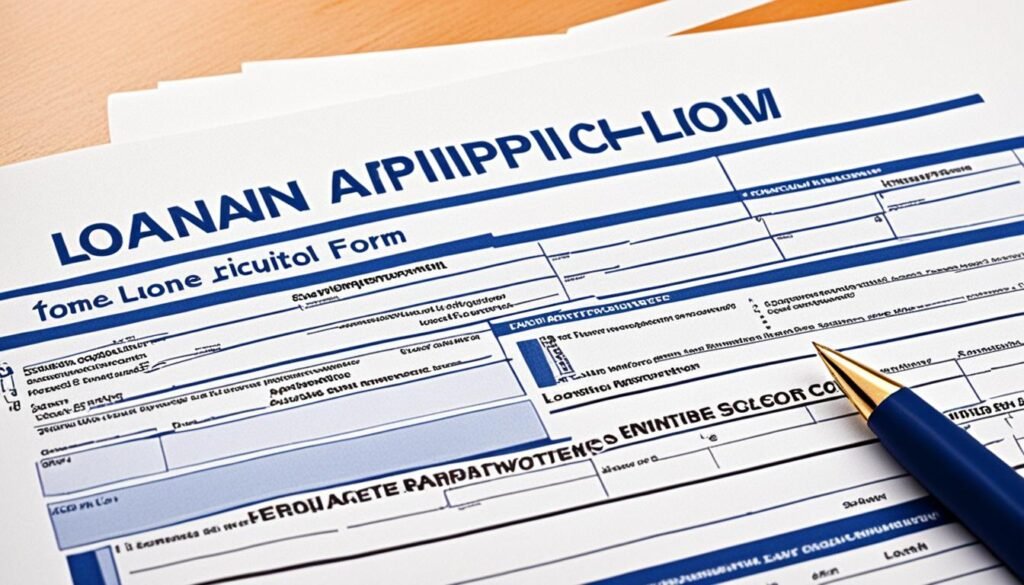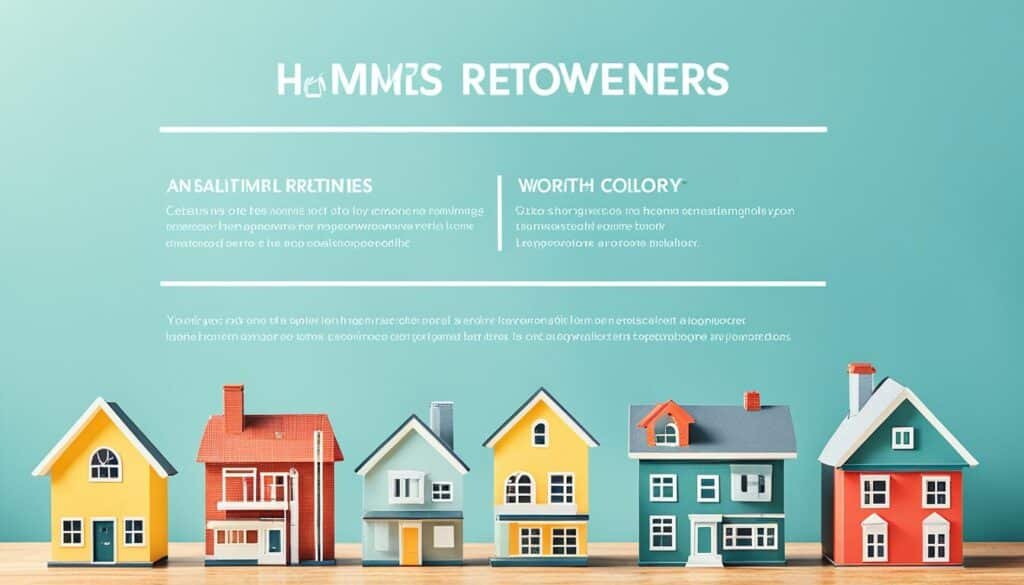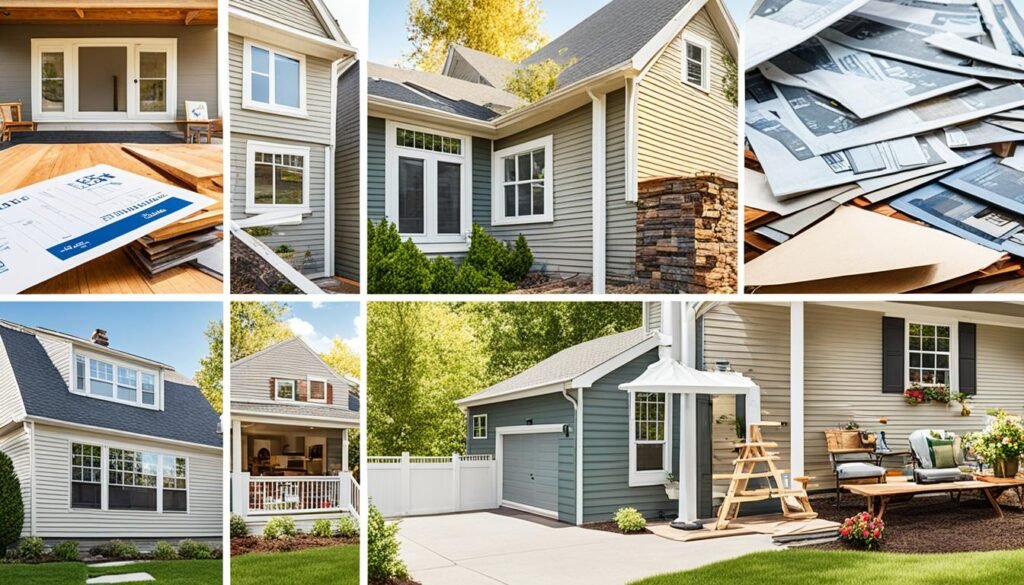Home renovations can be an exciting endeavor, but they often come with a hefty price tag. Fortunately, there are home renovation loan options available that can help you fund your desired upgrades and repairs without breaking the bank. Whether you’re planning a major remodel or just looking to make a few improvements, a home renovation loan can provide the financial assistance you need.
Home improvement loans are a popular choice for homeowners looking to cover the costs of their renovation projects. These loans offer flexibility and can be used for various purposes, such as installing energy-efficient windows, updating electrical systems, or creating your dream bathroom. Unlike specific home renovation loans, which may restrict the use of funds to particular types of renovations, home improvement loans can be used for any home project you have in mind.
Key Takeaways: Home Renovation Loan
- Home improvement loans provide a financial solution for funding your home renovations.
- These loans offer flexibility and can be used for any home improvement project.
- There are different types of home improvement loans, including home equity loans, HELOCs, cash-out refinancing, FHA 203(k) rehab loans, and unsecured personal loans.
- Interest rates, loan amounts, and repayment terms vary depending on the lender.
- Consider your credit score, equity in your home, and specific needs when qualifying for a home improvement loan.
Types of Home Improvement Loans
When considering home improvement projects, it’s important to explore the various types of loans available to fund your renovations. Here are some popular options:
- Home Equity Loan: A home equity loan allows you to borrow money using the equity you have accrued in your house as collateral. These loans are particularly useful for big, one-time expenditures like home remodeling.
- HELOC: Home equity lines of credit (HELOC) provide a revolving credit line that you can borrow against as needed. This type of loan is flexible and allows you to access funds for multiple projects over a longer period of time.
- Cash-Out Refinance: With a cash-out refinance, you replace your existing mortgage with a larger one and use the difference in cash for your renovations. This option is ideal if you want to tap into your home’s equity while securing a more favorable interest rate.
- FHA 203(k) Rehab Loan: FHA 203(k) rehab loans combine the costs of a home mortgage and home improvements into a single loan. This type of loan is perfect for those looking to purchase fixer-uppers.
- Unsecured Personal Loan: If you don’t have sufficient home equity, an unsecured personal loan is another option. This type of loan doesn’t require collateral and can be used for a variety of purposes, including home improvements.
Each of these loan options has its own advantages and considerations. Take the time to research and compare to find the best fit for your unique situation.
How Home Improvement Loans Work

Once you’re approved for a home improvement loan, the lender will provide you with the necessary funds to finance your project. These loans are typically disbursed in a lump sum, allowing you to cover the entire cost of your home renovations upfront. This provides you with the financial flexibility to hire contractors, purchase materials, and begin your project right away.
Repayment of home improvement loans usually starts immediately following the loan disbursement. As the borrower, you’ll be required to make fixed monthly installment payments over a predetermined period. The length of the repayment terms can vary, ranging from a few months to several years, depending on the loan amount and your agreement with the lender.
The interest rate associated with your home improvement loan is an important factor to consider. Your credit score and the lender’s terms will influence the interest rate you’re offered. Generally, borrowers with higher credit scores are more likely to secure lower interest rates, resulting in reduced overall borrowing costs.
It’s crucial to be aware of any additional costs that may be associated with your home improvement loan. Origination fees are a common expense, typically ranging from 1% to 8% of the total loan amount. These fees cover the administrative expenses incurred by the lender during the loan origination process.
“A home improvement loan provides you with the necessary funds to renovate your home, allowing you to focus on your project rather than worrying about the immediate financial burden.”
To better visualize the costs associated with a home improvement loan, refer to the following table:
| Loan Amount | Interest Rate | Repayment Terms | Origination Fees |
|---|---|---|---|
| $10,000 | 4.5% | 5 years | 2% |
| $20,000 | 5.0% | 7 years | 3.5% |
| $30,000 | 5.5% | 10 years | 5% |
This table showcases three different scenarios of home improvement loans with varying loan amounts, interest rates, repayment terms, and origination fees. As you can see, the total cost of the loan increases with a higher loan amount, interest rate, and origination fee. Understanding these costs can help you make an informed decision when selecting a home improvement loan that aligns with your financial goals.
Qualifying for a Home Improvement Loan

When it comes to securing a home improvement loan, there are certain qualifications you need to meet. While each lender may have their own specific requirements, there are common factors that most lenders consider. Here are the key factors that determine your eligibility for a home improvement loan:
1. Credit Score
Your credit score is an important factor that lenders take into account when reviewing your loan application. A good credit score indicates your financial responsibility and ability to repay the loan. While there are options available for borrowers with lower credit scores, having a higher credit score can increase your chances of qualifying for a home improvement loan.
2. Equity in Your Home
Home equity loans and home equity lines of credit (HELOCs) require you to have a certain amount of equity in your home. Equity is the difference between the current value of your home and the remaining balance on your mortgage. The more equity you have, the more likely you are to qualify for these types of loans.
3. Loan Term
The loan term refers to the length of time you have to repay the loan. Home improvement loans can have different repayment periods, ranging from a few years to as long as 30 years. Consider your financial situation and choose a loan term that allows you to comfortably make the monthly payments without straining your budget.
4. Loan Application
When applying for a home improvement loan, you will need to provide information about your credit history, income, and the purpose of the loan. Lenders will typically request documents such as pay stubs, tax returns, and bank statements to verify your financial situation. Be prepared to provide the necessary documentation to support your loan application.
Meeting these qualifications increases your chances of getting approved for a home improvement loan. However, it’s important to remember that each lender may have their own specific requirements. Take the time to research and compare different lenders to find the one that offers the best terms and conditions for your home improvement project.
Home Improvement Loan Rates

When considering a home improvement loan, the interest rate is a crucial factor to take into account. The interest rate determines the cost of borrowing and affects the overall affordability of the loan. It’s important to compare rates from different lenders to ensure you’re getting the best deal.
Interest rates for home improvement loans can vary depending on several factors. One significant factor is your credit score. Lenders will typically offer lower interest rates to borrowers with excellent credit histories, as they are considered less risky.
Another factor that can influence interest rates is the lender’s terms and conditions. Different lenders may have different pricing structures and criteria for determining interest rates. It’s essential to research various lenders and their rates to find the most favorable option for your specific needs.
In addition to interest rates, it’s important to be aware of any additional fees that may be associated with the loan. These fees, such as origination fees or closing costs, can vary from lender to lender. They can significantly impact the overall cost of the loan, so be sure to factor them into your decision-making process.
Comparing Home Improvement Loan Rates
Comparing home improvement loan rates allows you to make an informed decision and find the most competitive option. Here are some steps you can take to compare rates effectively:
- Research different lenders: Start by exploring reputable lenders that offer home improvement loans. Look for lenders that have a track record of competitive rates and positive customer reviews.
- Request loan quotes: Reach out to multiple lenders and request loan quotes based on your specific borrowing needs. Ensure that you provide consistent information to each lender to get accurate and comparable quotes.
- Consider the APR: When comparing loan rates, it’s important to consider the Annual Percentage Rate (APR). The APR takes into account not only the interest rate but also any additional fees or charges involved in the loan.
- Review the repayment terms: Alongside interest rates, pay attention to the repayment terms offered by different lenders. Consider factors such as the loan duration, monthly payment amounts, and any flexibility in repayment options.
- Seek professional advice if needed: If you’re unsure about comparing rates or understanding the loan terms, consider consulting with a financial advisor or a loan specialist who can provide guidance and clarify any questions you may have.
By carefully comparing home improvement loan rates and fees, you can make an informed decision that aligns with your budget and financial goals. It’s worth the effort to find a loan that offers favorable terms and helps you achieve your renovation dreams.
Home Improvement Loan Lenders

When it comes to finding the right lender for your home improvement loan, you have several options to choose from. Banks, credit unions, and online lenders all offer loan products tailored to suit your needs. To ensure you make the best choice, it’s essential to research and compare lenders. Consider the following factors to find the best lender for your home renovation project:
- Interest Rates: Compare lenders to find the best interest rates available. Lower interest rates can save you money over the life of your loan.
- Repayment Terms: Look for lenders that offer flexible repayment terms. Having the ability to adjust your repayment schedule can make managing your loan easier.
- Customer Reviews: Take the time to read customer reviews and testimonials to get a sense of the lender’s reputation and customer service. Positive reviews can indicate a reliable and trustworthy lender.
Online lenders have gained popularity in recent years due to their convenience and ease of application. Many online lenders offer competitive rates and quick loan approval processes. However, don’t discount traditional banks and credit unions. They may have personalized loan options or perks for existing customers.
Whether you choose an online lender or a local bank, comparing lenders will ensure you find the best fit for your home improvement project and financial goals. Remember, each lender has its own criteria and requirements, so take the time to carefully evaluate your options before making a decision.
By taking the time to research and compare home improvement loan lenders, you can find the best option to finance your renovation project. Remember to consider factors such as interest rates, repayment terms, and customer reviews. With the right lender, you’ll be one step closer to turning your home improvement dreams into reality.
How to Choose a Home Improvement Loan

When considering a home improvement project, it’s important to choose the right loan option that aligns with your needs and budget. Here are some key factors to consider when selecting a home improvement loan:
Determine Your Needs
First, determine the specific needs of your renovation project. Whether you’re planning a small bathroom upgrade or a major kitchen remodel, having a clear understanding of your project’s scope will help you determine the amount of money you need to borrow.
Evaluate Your Budget
Next, evaluate your budget to determine how much you can comfortably afford to borrow and repay. Consider your monthly income, expenses, and any existing debt obligations. It’s essential to choose a loan amount that fits within your financial means.
Explore Loan Options
There are several loan options available for home improvement projects. Here are a few common options:
- Home Equity Loan: If you have equity in your home, a home equity loan allows you to borrow against that equity while using your home as collateral.
- HELOC: A Home Equity Line of Credit (HELOC) provides a revolving line of credit that allows you to borrow as needed within a set credit limit.
- Personal Loan: An unsecured personal loan is another option that doesn’t require collateral. It can be used for various purposes, including home improvements.
Each loan option has its own advantages and considerations. It’s important to compare the interest rates, terms, and fees associated with each loan to find the best fit for your situation.
Consider Interest Rates and Repayment Terms
When comparing loan options, pay close attention to the interest rates and repayment terms. Lower interest rates can save you money in the long run, while flexible repayment terms can help you manage monthly payments more comfortably.
Weigh Additional Fees
In addition to interest rates, consider any additional fees associated with the loan, such as origination fees or closing costs. These fees can vary between lenders, so it’s crucial to factor them into your decision-making process.
Compare and Evaluate
Take the time to compare loan options from different lenders, considering all the factors mentioned above. By thoroughly evaluating your needs, budget, and loan options, you can make an informed decision and choose the home improvement loan that best suits your circumstances.
Loan Comparison
| Loan Type | Interest Rate | Repayment Terms | Additional Fees |
|---|---|---|---|
| Home Equity Loan | 3.5% APR | 10-20 years | Origination fee: 1% |
| HELOC | 4.2% APR | Draw period: 10 years Repayment period: 10-20 years |
Closing costs: $500 |
| Personal Loan | 6.8% APR | 2-5 years | No additional fees |
Financing Options for Home Improvements Without Equity

If you don’t have sufficient home equity, there are still financing options available for home improvements. Whether you’re looking to renovate your kitchen, remodel your bathroom, or add an addition to your home, there are several alternatives to consider. Here are three financing options that can help you fund your home improvement projects:
1. Personal Loans
Personal loans are unsecured loans that can provide the funds you need for your home improvements. These loans do not require collateral, such as home equity, making them accessible even if you’re a first-time homeowner or have limited equity in your property. Personal loans can be obtained from banks, credit unions, or online lenders, and the loan amount can typically range from a few thousand dollars to tens of thousands of dollars. The interest rates and terms will vary depending on your creditworthiness and the lender’s requirements. With a personal loan, you can easily finance your home improvement projects without tapping into your home’s equity.
2. Credit Cards
If you have smaller home improvement projects or need quick access to funds, using credit cards can be a viable option. Many credit card companies offer promotional interest rates for new purchases, allowing you to finance your home improvements with low or zero interest for a certain period. This can be particularly advantageous if you have a good credit score and can qualify for a credit card with a high credit limit. However, it’s important to be mindful of the interest rates that may apply once the promotional period ends. If you choose to use credit cards for your home improvements, make sure to manage your payments responsibly to avoid high interest charges.
3. Government Loans
The government offers various loan programs specifically designed to assist homeowners with their home improvement projects. One notable program is the Title 1 loan, which is insured by the Federal Housing Administration (FHA). Title 1 loans are accessible to both homeowners and non-homeowners, requiring no equity in your property. These loans can be used for a wide range of home improvements, including structural alterations, room additions, or energy efficiency upgrades. The loan amount for Title 1 loans ranges from $5,000 to $25,000, depending on the type of project and the borrower’s financial qualifications.
When considering these financing options, it’s crucial to weigh the pros and cons of each and determine which one aligns best with your financial goals and circumstances. Calculate the costs, interest rates, repayment terms, and any associated fees before making a decision. By exploring these financing avenues, you can embark on your home improvement journey, even without significant home equity.
| Financing Option | Key Features | Pros | Cons |
|---|---|---|---|
| Personal Loans | – Unsecured – Flexible loan amounts – Can be obtained from various lenders |
– No collateral required – Fast access to funds – Can be used for various home improvement projects |
– Higher interest rates compared to secured loans – Need a good credit score to qualify for favorable terms |
| Credit Cards | – Immediate access to funds – Promotional interest rates for new purchases |
– Convenient and quick financing option – Potential for low or zero interest rates during the promotional period |
– Higher interest rates after the promotional period – Limited credit limit for some individuals |
| Government Loans (Title 1) | – Insured by the Federal Housing Administration – No equity required – Can be used for a wide range of projects |
– No need for home equity – Lower interest rates compared to some other loan options – Accessible to both homeowners and non-homeowners |
– Lower loan limits compared to other loan programs – Certain restrictions on eligible projects and property types |
Looking for the best way to finance home improvements and pay for home renovations? This guide to home improvement loans will walk you through how each loan works, including the Fannie Mae HomeStyle Renovation Loan. Unlike home equity loans and HELOCs, this loan is unsecured, meaning it’s not secured by your home. Whether you’re considering taking out a renovation loan, a home equity loan, or a HELOC, understanding the different types of home improvement loans and their rates is crucial. Home improvement personal loans, secured by your home, offer lower interest rates than personal loans, while renovation loans can provide added value to your home. Home equity loans come with fixed rates, while HELOCs have variable rates, and both are secured by your home. Before deciding whether to refinance or take out a home equity loan, ensure you have enough equity in your home and consider the interest rates on personal loans versus secured loans. Ultimately, how you finance your home improvement projects depends on the value of your home and your renovation costs. Some lenders offer home improvement loans or allow you to finance your home and renovation costs together, while others may provide loans or pay closing costs. Use a home improvement loan calculator to estimate your monthly payments and decide on the best option for you.
Also Read: How To Determine A Loan’s Total Cost
Conclusion
When planning home renovations, it’s important to consider all available financing options and choose the one that best fits your needs and budget. By exploring different financing options, such as home renovation loans, personal loans, or other alternatives, you can find a solution that allows you to bring your home improvement dreams to life.
Before making a decision, it’s crucial to carefully assess the costs and benefits associated with each financing option. Take the time to plan your renovations based on your financial situation and consider the potential return on investment. This holistic approach will help you make informed decisions and ensure that you can complete your home renovations without overwhelming your budget.
Remember, the right financing and meticulous planning are key to successful home renovations. Take advantage of the available financing options to fund your projects while keeping your financial goals in mind. With careful consideration and smart choices, you can transform your house into the home of your dreams.
FAQs
Q: What are the best home renovation loan options available?
A: The best home renovation loan options include home improvement personal loans, home equity loans, or lines of credit, and renovation loans such as the Fannie Mae HomeStyle Renovation Loan.
Q: How can I get a renovation loan for my home?
A: To get a renovation loan for your home, you can apply for one through banks, credit unions, or online lenders that offer such services. Make sure to meet the eligibility criteria and provide necessary documentation.
Q: What should I consider when looking at home improvement financing?
A: When considering home improvement financing, think about the loan amount, interest rates, repayment terms, fees, and whether the loan is secured or unsecured. Compare different options to find the one that suits your needs best.
Q: How can I use a home improvement loan to fund home upgrades?
A: You can use a home improvement loan to fund home upgrades by using the loan amount to cover expenses related to renovations, repairs, or additions to your property.
Q: What is a home equity loan and how does it differ from a renovation loan?
A: A home equity loan is a type of loan where you borrow against the equity built up in your home, while a renovation loan is specifically designed to fund home improvement projects. Home equity loans are often used for various purposes, not just renovations.
Q: Can I get a home improvement loan if I don’t have enough equity in my home?
A: If you don’t have enough equity in your home, you may still be able to get a home improvement loan that is unsecured, like a personal loan. However, having equity can often result in better rates and terms.
Q: How can I pay for home renovations without draining my savings?
A: You can pay for home renovations without draining your savings by taking out a renovation loan or using a home equity line of credit (HELOC) to spread out the cost over time. This way, you can maintain your cash reserves for other expenses.




